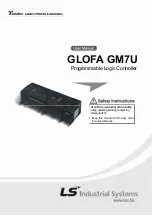
File Systems and Partitions
New Boot Card Setup
Copyright © 2010 Marvell
Doc. No. MV-S400320-00 Rev. -
December 2010
Page 29
1
2
3
4
5
6
7
8
9
10
11
12
13
14
15
16
17
18
19
20
21
22
23
24
25
26
27
28
29
30
31
32
33
34
35
36
37
38
39
40
41
42
43
44
45
46
47
48
49
50
51
52
53
54
55
56
57
58
4.3
New Boot Card Setup
The gplugD boot microSDHC card has two partitions — one with a DOS file system and one with a
Linux file system — and cannot be recreated under any Windows operating system. In the
procedure that follows, a bootable SD card with a “live” Ubuntu Linux 10.10 distribution is used. The
new kernel image and file system archive for the gplugD are placed in a folder named “gplugD” in the
root directory of the SD card. Any recent version of Linux can also be used regardless of the boot
media.
The only additional requirement is some means of reading and writing a microSDHC card. In the
steps that follow, a USB card reader is used. Integrated SD card readers are found on many
notebook computers and may be used along with a microSD-to-SD adapter. The gplugD boot card is
a 4 GB microSDHC card, so when rebuilding it, the card reader must be SDHC-compatible.
However, the gplugD kernel needs only a 4 MB partition, and the uncompressed root file system is
on the order of 900 MB, so even a 1 GB card can be used, eliminating the need for a
SDHC-compatible reader.
Boot the Linux operating system. When using the Ubuntu Linux 10.10 “live” trial, select the “Try
Ubuntu” option when prompted. There is no need to install the operating system when following
these instructions. See
.
1.
Insert the new microSDHC card into the card reader. Ubuntu automounts the card and opens it
in a file manager window. Close this window. See
.
Figure 25: Ubuntu “Live” Trial











































